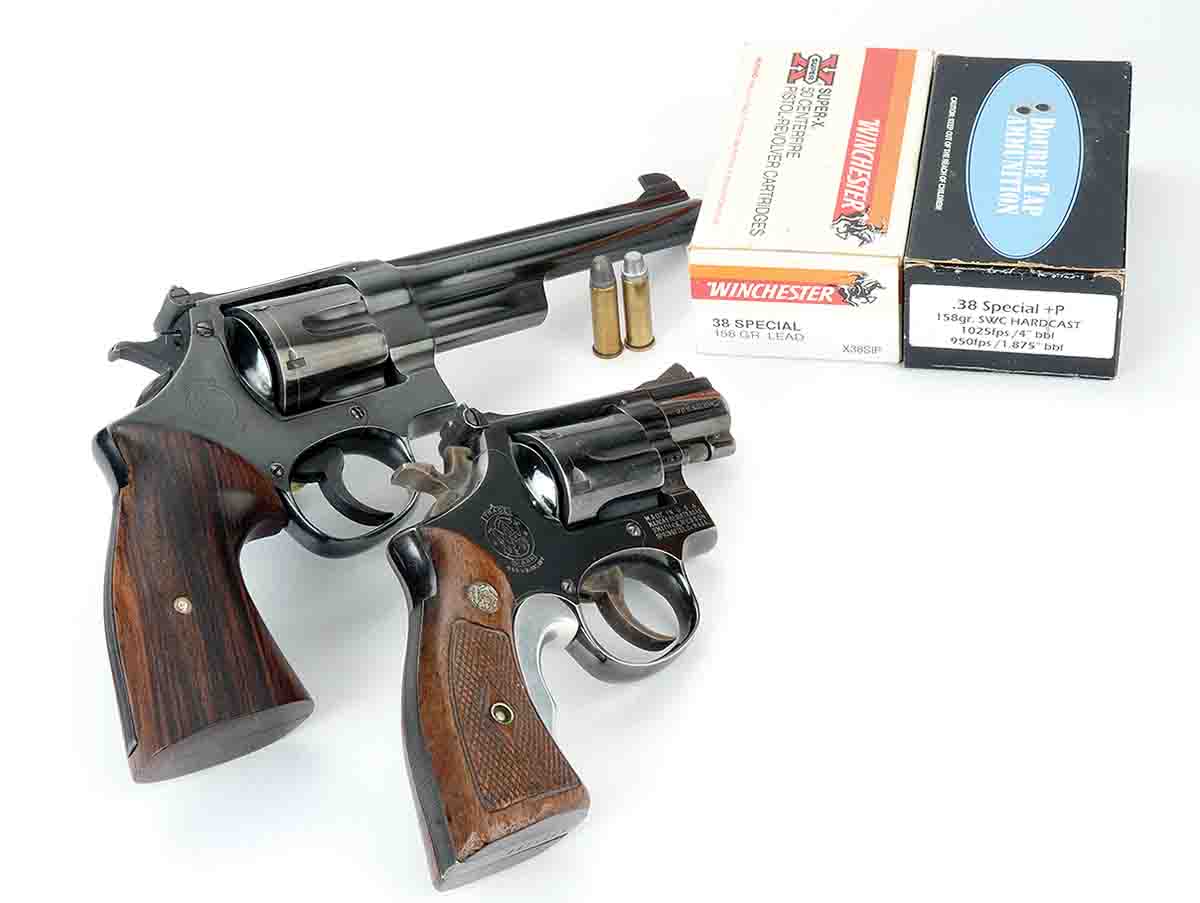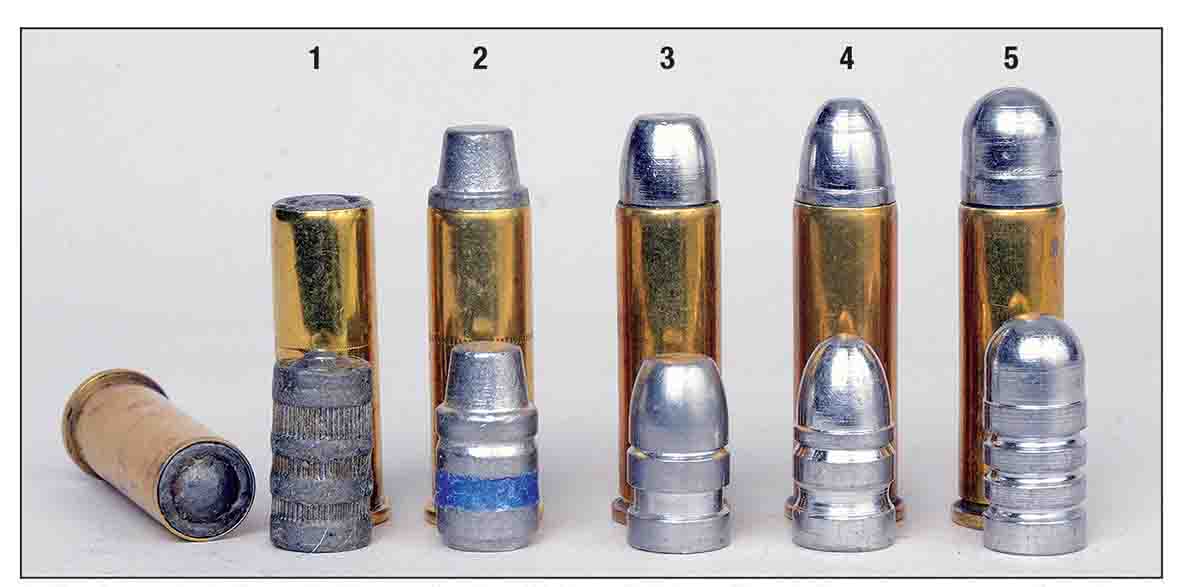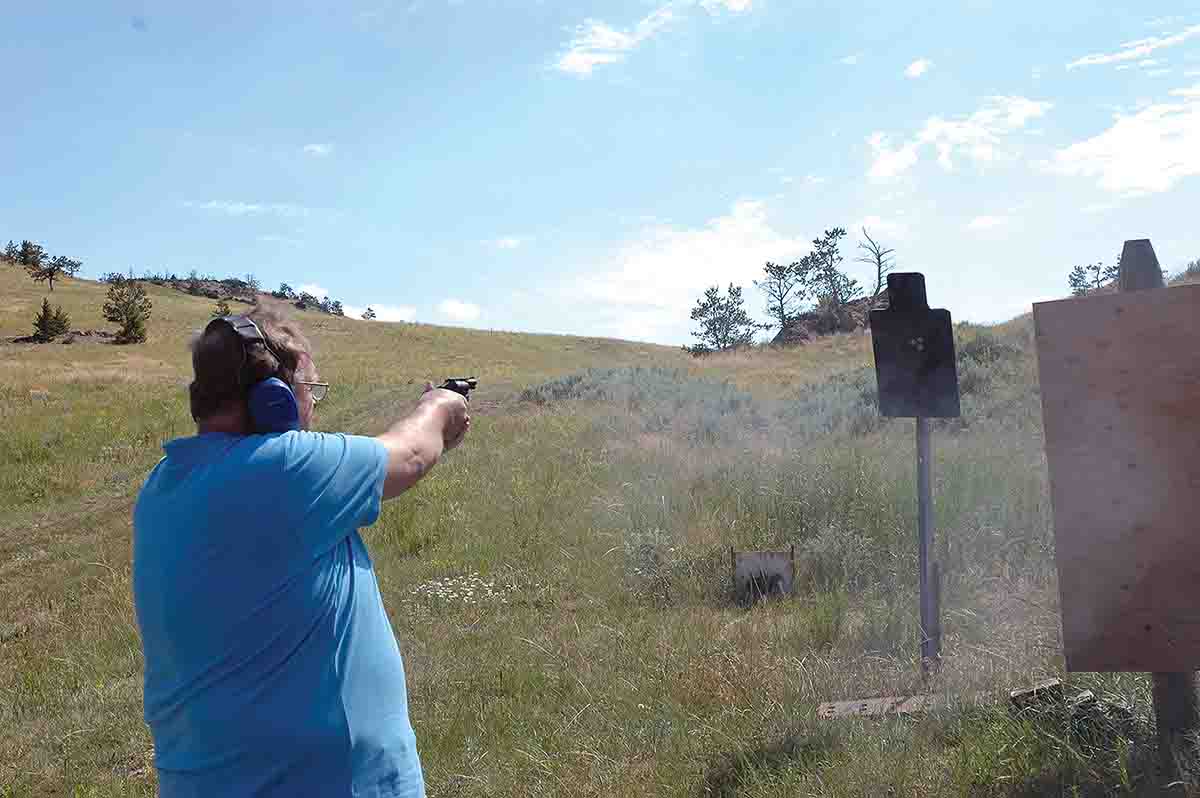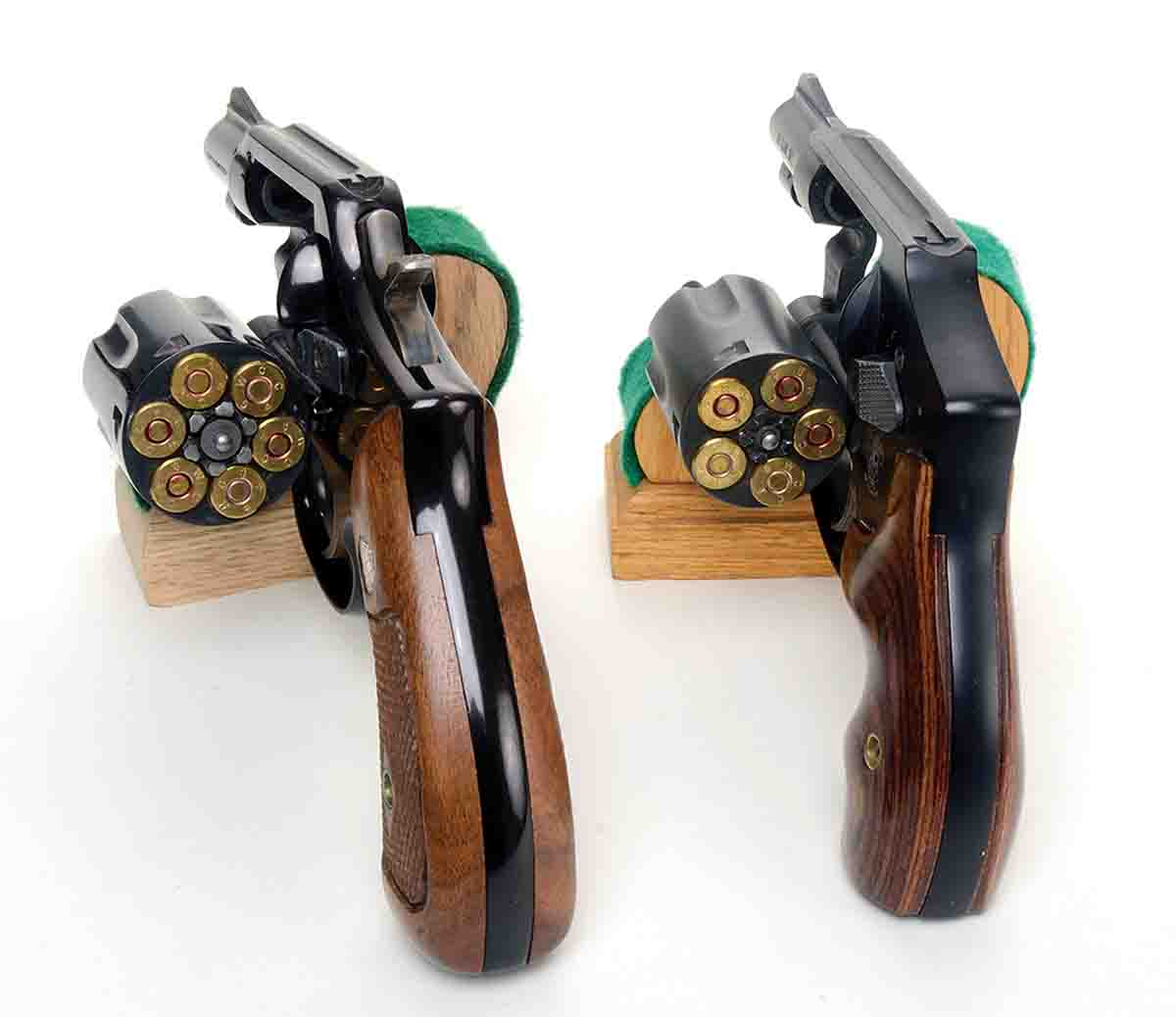Mike's Shootin' Shack
Snub-Nose .38 Specials
column By: Mike Venturino | August, 18

Seven are on hand right now. Six are Smith & Wessons and one is a Colt Detective Special. Six are .38s. The exception is a Smith & Wesson Model 360 .357 Magnum. Some “bright light” at Smith & Wesson thought a Scandium frame, 11-ounce snub nose would be a great idea. It wasn’t, at least not with true .357 Magnum loads. I needed only to shoot one round to determine that. However, it makes a fine .38 Special. Six of the seven have the usual groove down the frame’s topstrap for a rear sight. The seventh – a Smith & Wesson Model 15 – has a fully adjustable rear right. Two are five shooters; the rest are sixguns. Six are capable of single- or double-action firing. A Smith & Wesson Model 442 is double-action-only.
At about seven to 10 paces, most of them shoot to point of aim, or slightly above it, with standard-weight (150- to 160-grain) bullets. A Smith & Wesson M&P (later Model 10) consistently shoots every load tried several inches to the right of point of aim. I would dispose of it had it not been “born” the same year I was. Fully adjustable rear sights on a revolver with a 2-inch barrel doesn’t seem to make much sense, except I once watched an FBI firearms instructor fire 50 rounds from one at ranges from 7 yards (double action) to 60 yards (single action) and all bullet holes in the target could have been covered with a paper plate.


My .38 Specials get lead-alloy bullets, cast by myself or from commercial casters or swaged by major bullet manufacturers. If memory serves me well, I think Skeeter Skelton even wrote that he thought factory 148-grain wadcutters made good snub-nose loads. I also use semiwadcutters, roundnose/flatpoint and even roundnose bullets for my handloads. All shoot well from my snub-nose assortment.
A factor to be aware of is that .38 Special muzzle velocities drop dramatically when shot from a 2-inch barrel compared to a 4-, 5- or 6-inch barrel. Loads that no one would sneer at from a longer barrel .38 Special can be downright anemic from a 2-inch barrel. Let’s consider the 148-grain factory wadcutters first. Fired from the 6.5-inch barrel of a Smith & Wesson Model 23, five rounds averaged 758 fps. From the 2-inch barrel of my Smith & Wesson Model 360, the same load averaged 634 fps. From a Smith & Wesson Model 14 with a 6-inch barrel (K38), Double Taps’ 158-grain SWC +P factory load gave 1,038 fps, but from the 2-inch barrel of a Smith & Wesson Model 15 it averaged only 844 fps.
Another factor that is often stressed by firearms instructors and trainers is that practice should be done with the same

For instance, for more than 50 years I have loaded .38 Specials with 150- to 160-grain bullets with 3.2 grains of Bullseye. That load with either bullet breaks 800 fps from longer barrels. When shot from a Smith & Wesson Model 12 (alloy frame) snub nose, velocity did not exceed 700 fps. Another old favorite is 4.5 grains of Unique that gives a velocity just shy of 900 fps from the 6.5 barrel of my Smith & Wesson Model 23. It provides 750 fps from a Smith & Wesson 442, which makes it a more viable choice for practice. Titegroup powder will provide a good practice load, but only at near-maximum charge weights. Using 3.4 grains with a 150-grain, commercially cast SWC, velocity hit 744 fps from a nickel-plated Model 10 snub nose.
Someone has to be wondering about accuracy with these short .38s. Truthfully, I’ve never fired them at 25 yards and seldom at paper. Most of my shooting with all seven revolvers has been at about seven to 10 paces at steel plates. While standing and shooting double action, if I can cover the group with my palm I’m completely satisfied. None of these well-made .38s has failed to do that with any handload tried.


